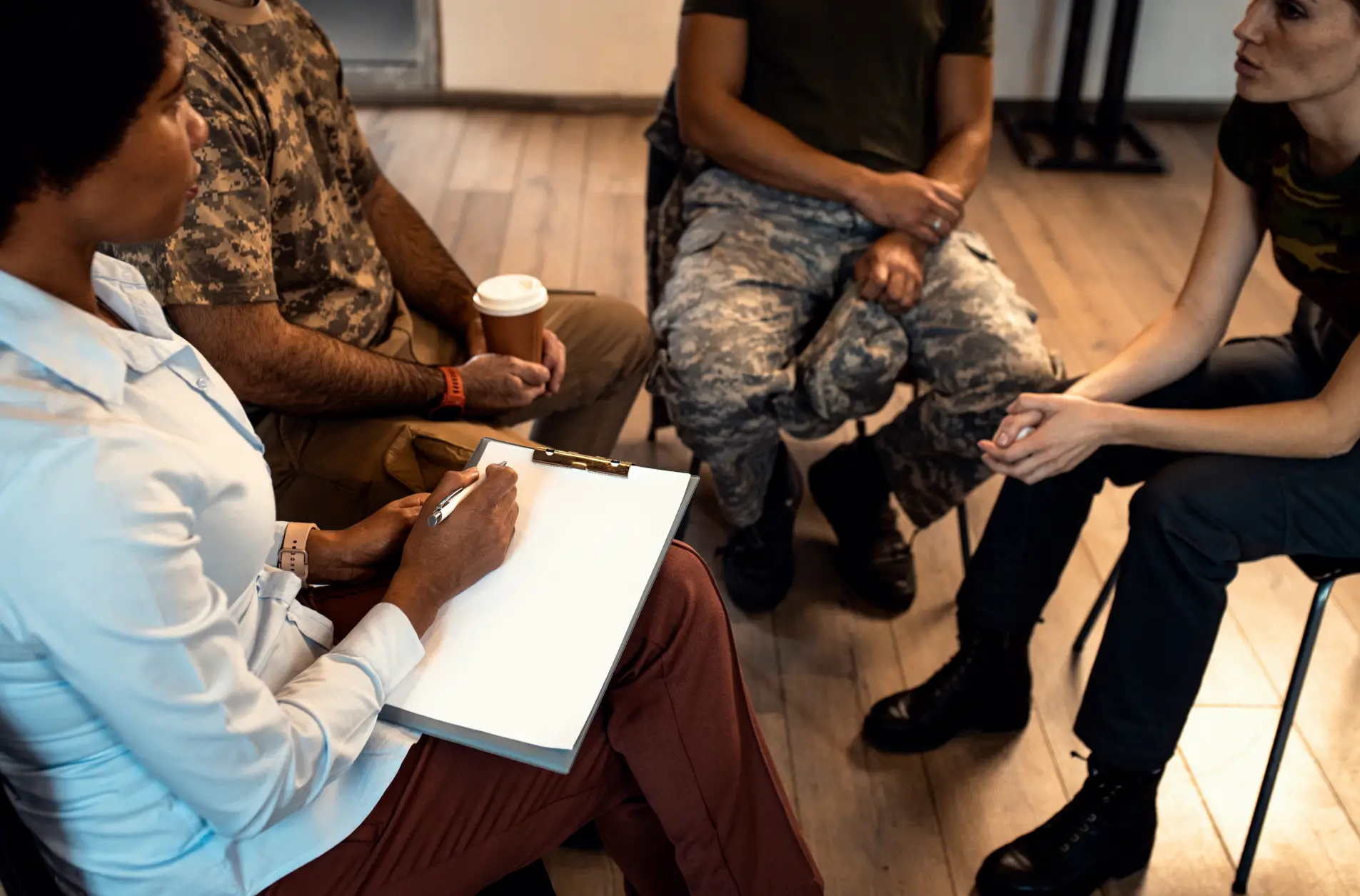Reintegrating into Civilian Life After Addiction Treatment
Reintegrating into civilian life after addiction treatment presents a unique set of challenges, especially for veterans who have already faced the transition from military service to civilian life. Drawing on the parallels between these experiences can help veterans navigate their post-treatment journey more effectively.
This blog article from our caring team at TriCareRehabs.com will explore the reintegration process, highlight the differences from the initial military-to-civilian transition, and provide strategies for success.
Understanding the Transition from Addiction Treatment to Civilian Life
After completing addiction treatment, veterans often face a new set of challenges similar to those encountered when leaving the military. This period requires significant adjustment and adaptation as they work to maintain their sobriety and rebuild their lives.
Rebuilding Routine: Just as veterans had to establish new routines after leaving the military, they must now create routines that support their sobriety and recovery. This can involve setting daily schedules, engaging in regular activities, and maintaining healthy habits learned during treatment.
Finding New Purpose: Veterans must find new purposes and goals to maintain their recovery, similar to finding new missions after military service. This might include setting personal goals, finding meaningful work or volunteer opportunities, and pursuing hobbies or interests.
Reintegrating into Society: Veterans need to reintegrate into society again, this time with the added challenge of maintaining sobriety and avoiding triggers that could lead to relapse. This requires building a support network, seeking continued care, and staying engaged in recovery activities.
Key Differences in the Second Transition
The transition from addiction treatment back to everyday life, while similar in many ways to the military-to-civilian transition, comes with its own set of unique aspects:
Equipped with Tools and Knowledge: Unlike the initial transition, veterans leaving addiction treatment are armed with the tools and strategies learned during their recovery. These include coping mechanisms, relapse prevention techniques, and a support network.
Support Systems: Veterans often leave treatment with access to aftercare programs and support groups designed to help them maintain their sobriety and continue their recovery journey.
Focus on Sobriety: Maintaining sobriety adds an additional layer of complexity to the reintegration process. Veterans must be vigilant in avoiding triggers and environments that could jeopardize their recovery.
Strategies for Successful Reintegration
To help veterans navigate the challenges of reintegrating into civilian life after addiction treatment, here are some practical strategies:
- Establish a Routine: Creating a daily routine can provide the structure that many veterans find comforting and stabilizing. Include time for self-care, exercise, work or volunteer activities, and hobbies.
- Set Realistic Goals: Setting achievable goals can help veterans find purpose and direction. These goals can be related to career, education, personal growth, or relationships.
- Build a Support Network: Connecting with others who understand their experiences is crucial. This can include family, friends, fellow veterans, and support groups.
- Utilize VA Resources: The Department of Veterans Affairs (VA) offers various programs and resources to support veterans in their recovery and reintegration. Take advantage of these services, including counseling, vocational training, and health care.
- Engage in Meaningful Activities: Finding activities that provide a sense of accomplishment and enjoyment can be highly beneficial. This could be volunteering, pursuing hobbies, or engaging in community events.
- Practice Mindfulness and Stress Management: Techniques such as meditation, yoga, and deep breathing exercises can help manage stress and promote emotional well-being.
- Continue Therapy and Counseling: Ongoing therapy can provide continuous support and guidance, helping veterans navigate the challenges of reintegration and maintain their recovery.
The Importance of Continued Support and Aftercare
Continued support and aftercare are crucial components of successful reintegration and long-term recovery. Veterans should not feel that they are alone once they complete addiction treatment. Aftercare programs can include ongoing therapy, support groups, and check-ins with treatment providers.
What are the Benefits of Continued Support:
- Relapse Prevention: Regular support helps veterans identify and manage triggers, reducing the risk of relapse.
- Accountability: Being part of a support network provides accountability and encouragement to stay on track with recovery goals.
- Emotional Support: Continued support offers a safe space for veterans to share their experiences, challenges, and successes.
- Resource Access: Aftercare programs often provide access to additional resources, such as housing assistance, job training, and educational opportunities.
Life After Rehab for Members of Our Armed Forces
Reintegrating into civilian life after addiction treatment is a multifaceted process that requires understanding, support, and practical strategies. Veterans face unique challenges in this journey, but with the right tools, support, and dedication, they can successfully navigate this transition and build fulfilling, sober lives.
Continued support and aftercare are essential in maintaining long-term recovery and ensuring that veterans do not face these challenges alone. By leveraging available resources and fostering a strong support network, veterans can thrive in their new civilian lives and achieve lasting recovery.
Remember we are here to support you (or an immediate family member covered by TRICARE) should you need to find an approved rehab facility, please reach out confidentially now!
- Marine Corps Substance Abuse Program Guidance - December 8, 2025
- Does Spice Show Up on a Military Drug Test? - December 2, 2025
- Air Force DDRP Guidance - November 30, 2025

